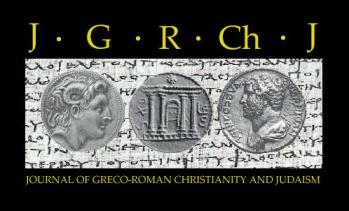19.1 | Tyler Hallstrom Asbury Theological Seminary, Wilmore, KY Stephen’s speech has been regarded as a storm center in scholarship with one of the key issues centering on his use of the term χειροποίητος “handmade” in Acts 7:48. In determining Stephen’s view of the temple, whether indicating (1) a replacement of the temple, (2) a rejection and condemnation of the temple, or (3) an affirmation of God’s transcendence of the temple, scholarship has frequently appealed to the LXX use of χειροποίητος. However, a lacuna exists on how this decisive term was employed throughout not only the LXX specifically, but other Jewish and Greco-Roman sources more broadly. The present study examines the meaning of χειροποίητος throughout the corpora to enhance precision regarding how the term was employed and with a view toward assessing Stephen’s view of the temple. |
19.2 | Daryn Graham Independent Scholar, Sydney, NSW, Australia In this article, the persecution of the early Christians of Rome after the fire of 64 CE is explored in detail. Examined is Nero’s role in the designation of Christians as incendiaries, the role of Nero and others as persecutors. Demonstrated is the fact that Christians and other marginalized groups in Rome were victims of the persecution despite their potential great innocence. The fates of Paul and Peter are also explored, as are the roles of others in relation to them, leading up to the persecution, during and following it. However, the heroic accessibility of Paul and Peter and of other early Christians like them is also explored along with the adoration in which they were held on account of such accessibility. They were leaders of real people and were real people who stood for the accessible love of God in Rome and elsewhere. Therefore, this is article explores early Christianity’s high standards and resilience, as it explores the persecution of 64 CE. |
19.3 | Robin Thompson Grand Canyon University, Phoenix, AZ When Paul appealed to the Corinthian community of Christ-followers to participate in his collection, some of those in the community were slaves. This article considers how such persons might have responded to Paul’s appeal. It explores what we know of Paul’s collection, briefly explains the reality of first-century slavery and examines how Paul's appeal might have caused a dilemma for the slaves in the Corinthian community of Christ-followers. The article closes by considering what the implications of the first-century dilemma might be for the life of the contemporary Christ-follower. |
19.4 | Christopher M. Hansen Independent Scholar, Grand Blanc, MI This essay is a response to Dave Allen’s intriguing article positing a radical reinterpretation of the evidence for an authentic core to the Testimonium Flavianum. While ingenious, the present article contends that certain elements of Allen’s reconstruction derived from Tacitus, among others, is not convincing and that Allen’s reconstruction suffers from a number of methodological problems: (1) Allen’s arguments for a connection between the TF and Tacitus’s Annals 15.44 are not convincing on closer inspection; (2) his methods of reconstruction and finding sources for reconstruction often seem logically fallacious; and (3) the figure whom he claims is Jesus bears so little resemblance (including being unnamed) that the idea any non-Christian (or Christian) scribe would identify this figure as Jesus is strenuous, thus, challenging the entire idea of this text as a 'testimony' to Jesus at all. As such, it is concluded that this is probably not what any original Testimonium Flavianum approximated, if there ever was an authentic core at all. |
19.5 | Kennedy K. Ekeocha West Africa Theological Seminary, Lagos, Nigeria The prevailing rhetorical outline of Gal. 1–2 poses a problem for interpretation, but it has not been cogently challenged. Essential to the issue is the inaccurate delineation of the narratio, its extent, and intent. The common practice finds no use for 1.10 in the narratio often delimited to Gal. 1.11–2.14. In this way, the autobiographical self-defensive goal of Paul in the section gets lost. Drawing from ancient rhetorical theory, this study demonstrates the centrality of 1.10 to the narratio. It argues for the integrity of 1.10–2.21 as a coherent rhetorical unit representing Paul’s narrative self-defense (1) as one who no longer pleases people but (in the character of Christ) God alone and (2) as a refutation of opponents maligning his ethos as a means to persuade the Galatians to embrace their version of the gospel. |
19.6 | John D. Doss Asbury Theological Seminary, Wilmore, KY This article is a comparative study of the growth of Greco-Roman associations and early Christianity as recorded in the book of Acts. The first section presents the evidence for associations as the primary model for early Christianity. The second section surveys the epigraphic and archaeological evidence for the expansion of ancient associations. This results in five common factors of growth, which are then applied to the book of Acts. The crucial role of social networks, influential converts, patronage, the marginalized, and divine guidance in the growth of Greco-Roman associations is also reflected in Acts’ account of early Christian expansion. |

